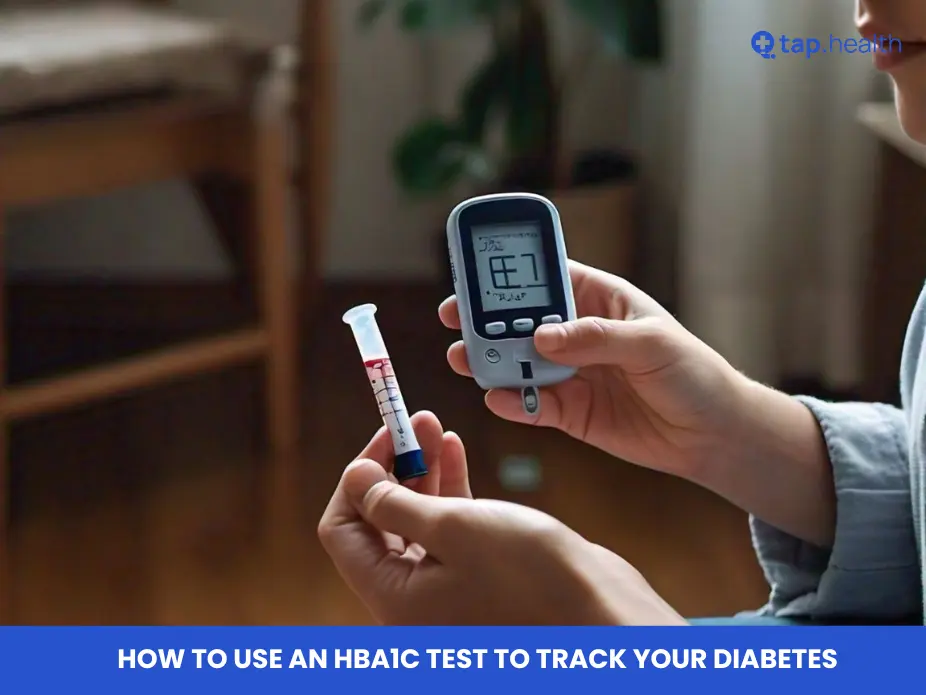Managing diabetes involves more than just checking your blood sugar levels daily. It requires understanding long-term patterns in blood sugar management, and one of the most effective ways to do this is through an HBA1C test. This test provides valuable insights into your average blood sugar levels over a few months, making it a critical tool for people with diabetes or those at risk.
In this detailed guide, we will explore everything about the HBA1C test—from how it works to practical tips on improving your results.
What is an HBA1C Test?
The HBA1C test, also known as the glycated hemoglobin test, measures the percentage of glucose (sugar) attached to hemoglobin in your red blood cells. Since red blood cells have a lifespan of about three months, the test reflects your blood sugar control over this period.
When blood sugar levels are high, glucose binds to hemoglobin at a higher rate, leading to a higher HBA1C percentage.
Key Highlights of the HBA1C Test:
- Long-term Monitoring: Unlike daily blood sugar tests that reflect momentary levels, the HBA1C test captures trends over time.
- Convenience: The test does not require fasting and can be done at any time of the day.
Why is the HBA1C Test Important?
For people with diabetes, consistent management of blood sugar is essential to avoid complications such as nerve damage, kidney issues, or cardiovascular problems. The HBA1C test provides a bigger picture of your control over diabetes, allowing healthcare providers to make better treatment decisions.
Benefits of the HBA1C Test:
- Accurate Measurement: It reflects overall glucose exposure over months, unlike daily tests that can be affected by short-term fluctuations.
- Early Detection: It helps diagnose prediabetes and diabetes before symptoms appear.
- Monitoring Effectiveness: It evaluates whether current treatment plans are working.
- Goal Setting: It establishes a baseline for personalized health targets.
How the HBA1C Test Works
The HBA1C test is performed with a simple blood draw, usually at a clinic or hospital. Once the sample is collected, it is analyzed to determine the percentage of glycated hemoglobin.
Understanding Your HBA1C Levels:
- Normal Range: Below 5.7%.
- Prediabetes: 5.7% to 6.4%.
- Diabetes: 6.5% or higher.
If you’re managing diabetes, your doctor may set a target HBA1C level tailored to your situation. A common recommendation is to keep levels below 7%, although this can vary depending on factors like age, health conditions, and lifestyle.
When Should You Get an HBA1C Test?
The frequency of HBA1C testing depends on your health status:
- Diagnosed Diabetes:
- Every 3 months for those making significant changes to their management plan or struggling with control.
- Every 6 months if your blood sugar is stable and within target range.
- Prediabetes or Risk Factors:
- Annually to monitor progression and make proactive lifestyle changes.
- Routine Health Check-ups:
- Adults over 40 or those with risk factors like obesity, high blood pressure, or a sedentary lifestyle should include it in routine blood tests.
How to Use the HBA1C Test to Track Your Diabetes
The HBA1C test isn’t just a diagnostic tool; it’s also a tracker that helps monitor the progress of your diabetes management plan. Here’s how to make the most of it:
1. Set Realistic Goals
Work with your healthcare provider to set a target HBA1C level that reflects your overall health and lifestyle. For example, younger individuals with fewer complications might aim for tighter control, while older adults may have slightly higher targets to avoid hypoglycemia risks.
2. Monitor Progress
- Use the results to evaluate how well your current treatment plan (medication, diet, exercise) is working.
- A drop in HBA1C levels after three months suggests improvement, while a rise indicates the need for adjustments.
3. Recognize Trends
By comparing results over time, you can identify patterns. For instance:
- A steady increase may signal the need for more intervention.
- Consistently low levels show effective control.
How to Improve Your HBA1C Levels
Lowering your HBA1C requires a combination of lifestyle changes, consistent monitoring, and, if needed, medical interventions. Here’s how:
1. Adopt a Healthy Diet
Diet is one of the most influential factors in blood sugar management. Focus on:
- Low-glycemic index foods like oats, quinoa, legumes, and leafy greens.
- Lean proteins such as chicken, fish, tofu, and eggs.
- Healthy fats from nuts, seeds, avocados, and olive oil.
- Portion control to avoid overeating and blood sugar spikes.
Avoid:
- Sugary drinks, processed snacks, and refined carbohydrates like white bread and pasta.
2. Incorporate Regular Exercise
Physical activity lowers blood sugar by helping your body use insulin more efficiently. Aim for:
- 150 minutes per week of moderate aerobic exercise (e.g., brisk walking, swimming).
- Strength training twice a week to build muscle and improve metabolism.
3. Stay Hydrated
Drink plenty of water to help your kidneys flush out excess sugar.
4. Take Medications as Prescribed
Medications, including insulin and oral drugs, play a critical role in managing diabetes. Never skip doses, and consult your doctor if you experience side effects.
5. Manage Stress
Chronic stress triggers hormonal changes that can elevate blood sugar levels. Practice mindfulness, yoga, or other relaxation techniques to keep stress under control.
6. Prioritize Sleep
Poor sleep can disrupt insulin sensitivity. Aim for 7–8 hours of quality sleep nightly.
Debunking Myths About the HBA1C Test
Myth 1: “You Don’t Need Daily Testing if You Get an HBA1C Test.”
Truth: HBA1C provides a long-term view, but daily testing helps catch immediate fluctuations, which are crucial for day-to-day management.
Myth 2: “A Normal HBA1C Means You Don’t Have Diabetes.”
Truth: While a normal HBA1C suggests good control, it doesn’t rule out diabetes. Always combine it with other tests and clinical assessments.
Myth 3: “You Can Lower HBA1C Quickly Before the Test.”
Truth: Short-term efforts won’t significantly affect the result, as it reflects three months of blood sugar control.
Also read: Boosting Your Memory: 7 Strategies for People with Diabetes
FAQs: Your Questions Answered
1. What is the normal HBA1C range for diabetics?
Most healthcare providers recommend keeping HBA1C below 7%, but individual targets may vary.
2. How soon can HBA1C levels improve?
Noticeable improvements can occur in 3 months with consistent efforts like dietary changes and regular exercise.
3. Can HBA1C results be inaccurate?
Yes, factors like anemia or recent blood transfusions can affect results. Always discuss anomalies with your doctor.
4. Is fasting required for an HBA1C test?
No, the HBA1C test does not require fasting, making it convenient.
5. Can weight loss lower HBA1C levels?
Yes, losing excess weight improves insulin sensitivity, which can reduce blood sugar levels over time.
References and Sources
- American Diabetes Association
Learn more about diabetes management and the role of the HBA1C test:
www.diabetes.org - National Institute of Diabetes and Digestive and Kidney Diseases (NIDDK)
Detailed information about the HBA1C test and its importance:
www.niddk.nih.gov - Mayo Clinic
Expert advice on interpreting HBA1C test results and diabetes care:
www.mayoclinic.org



